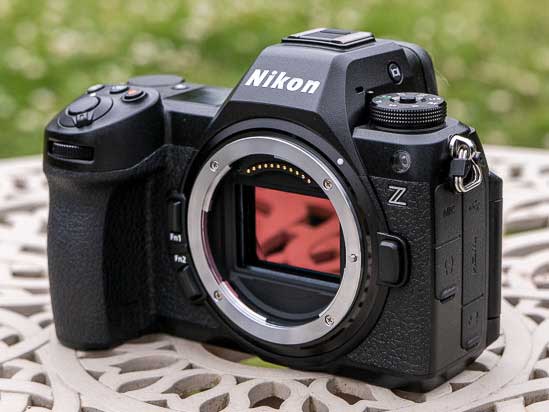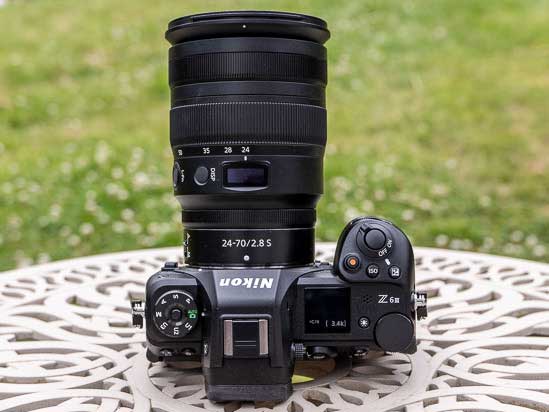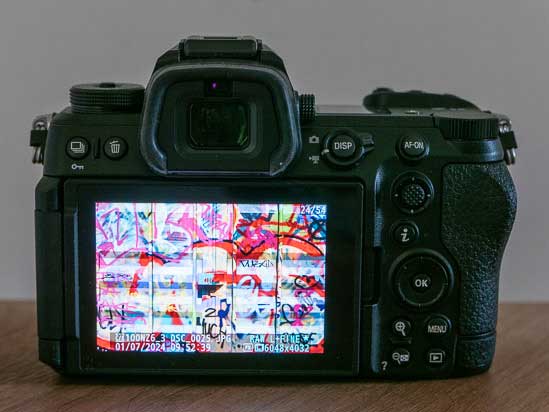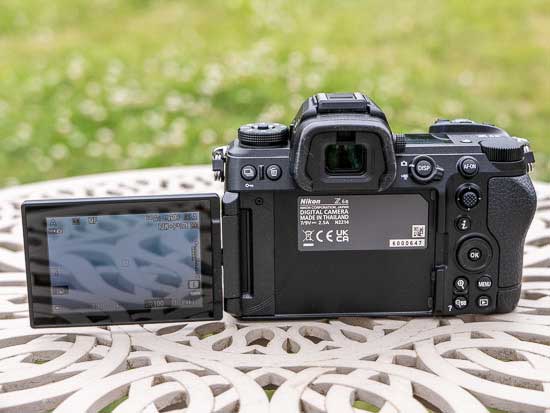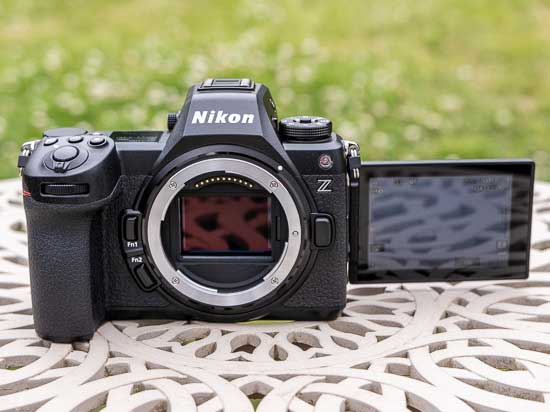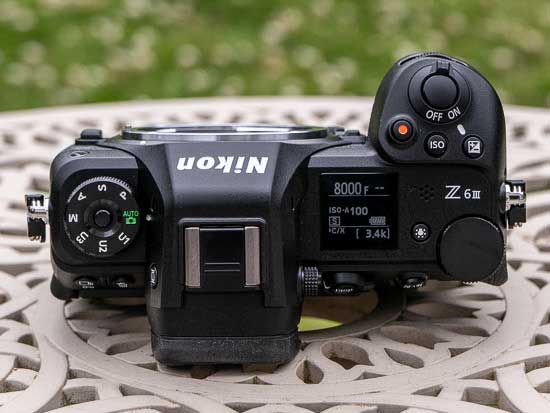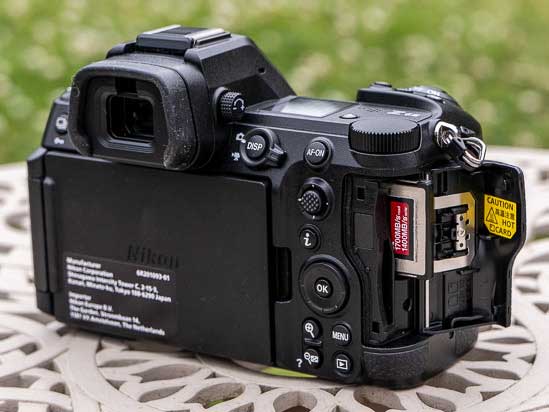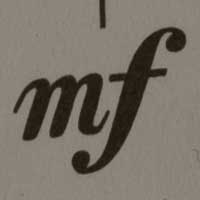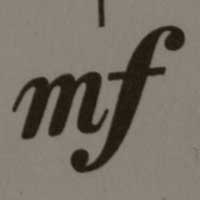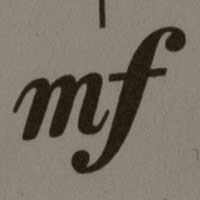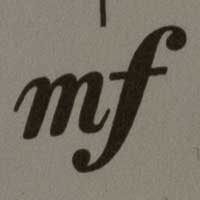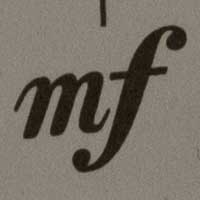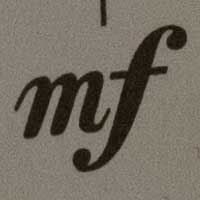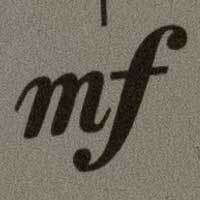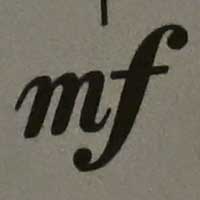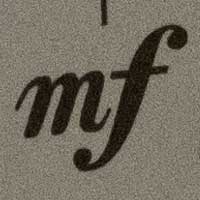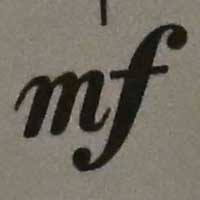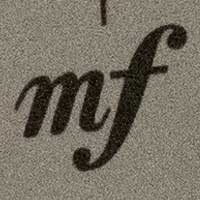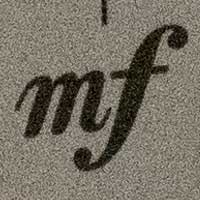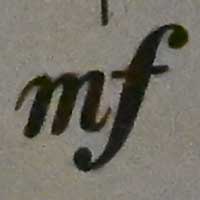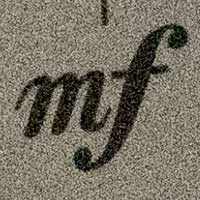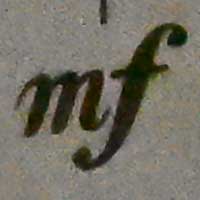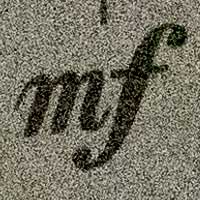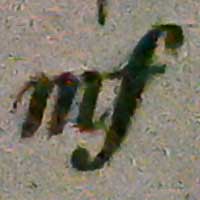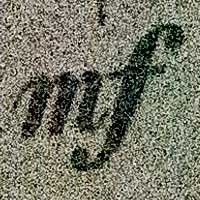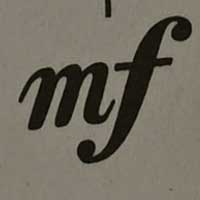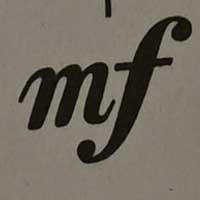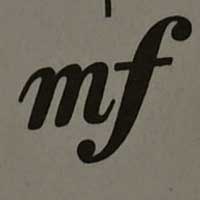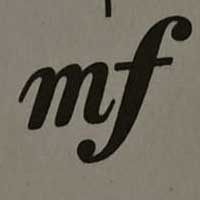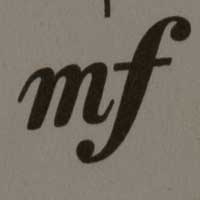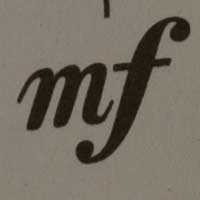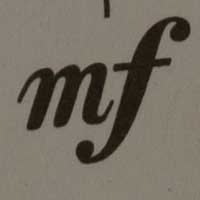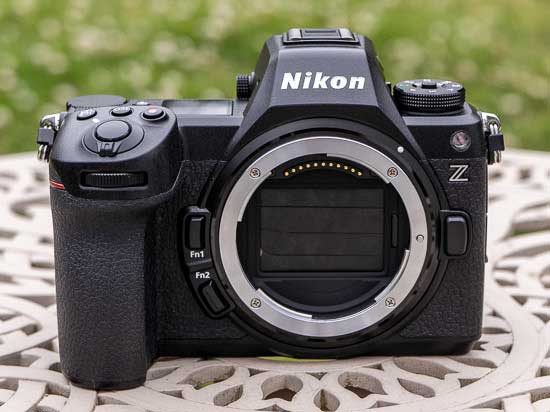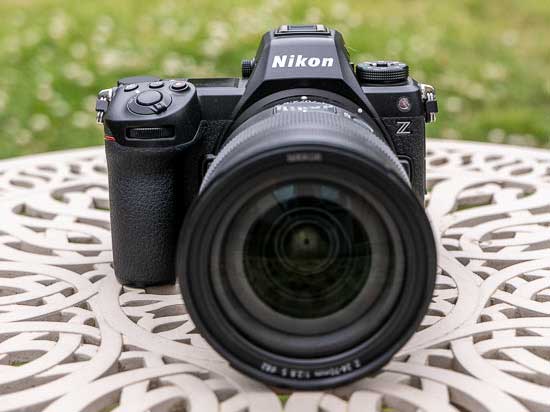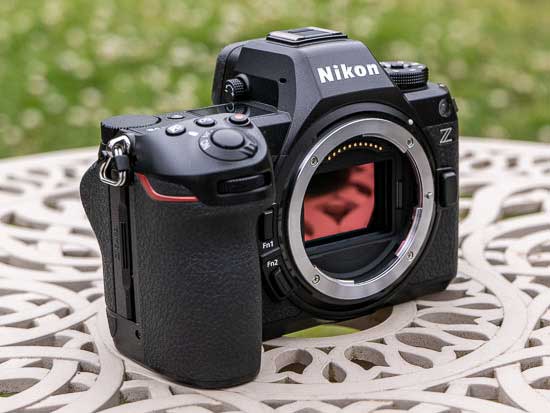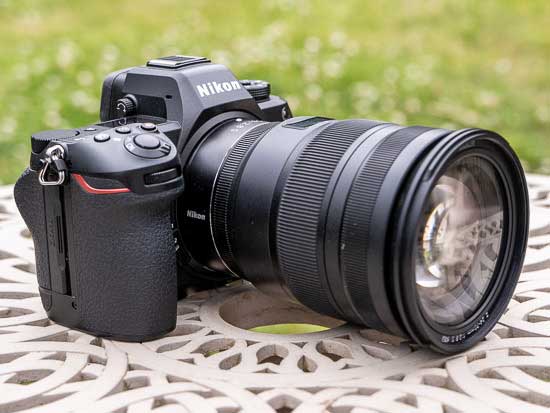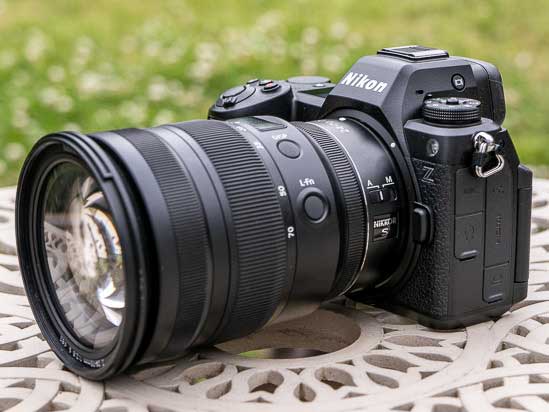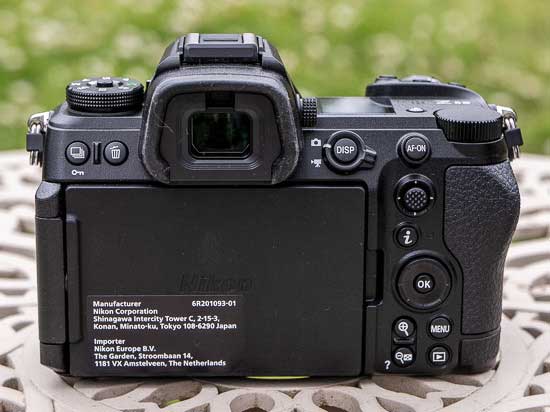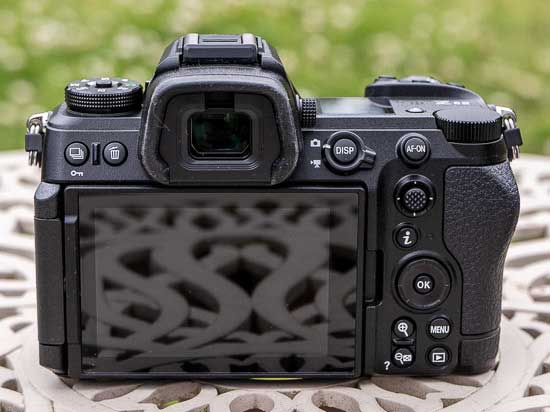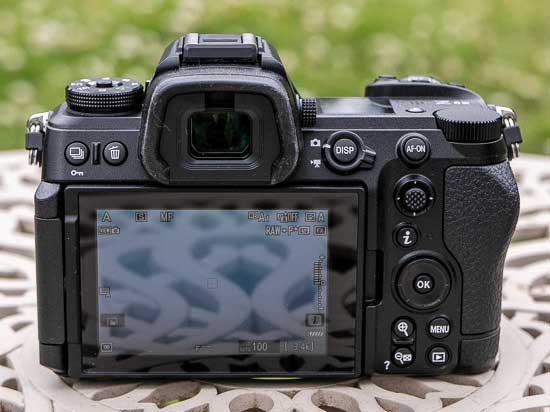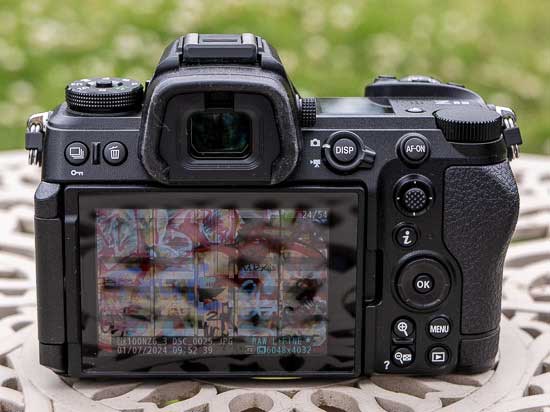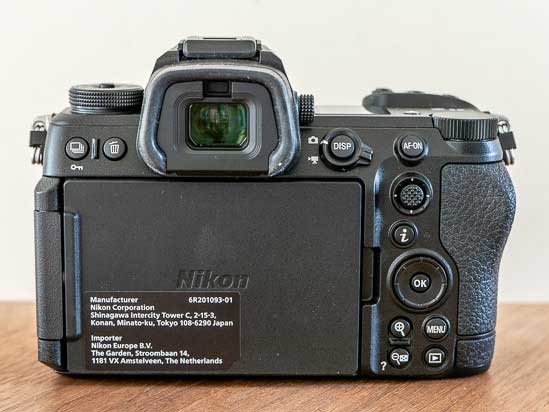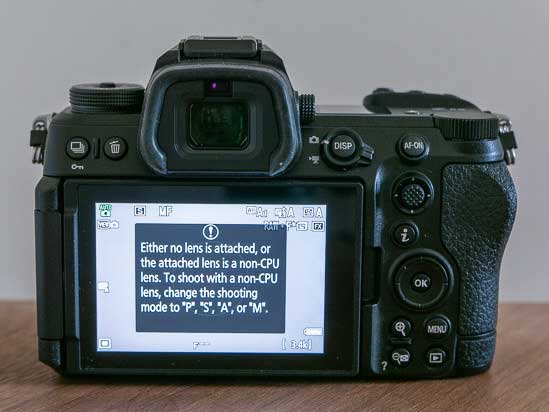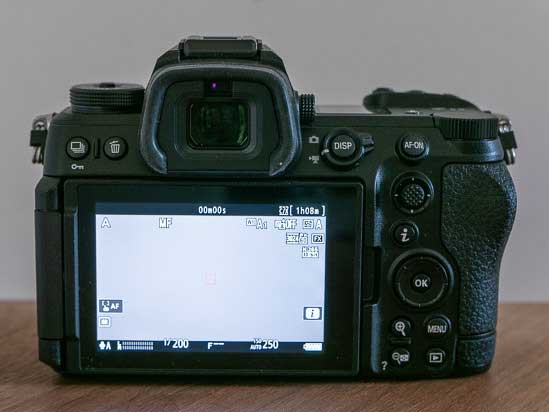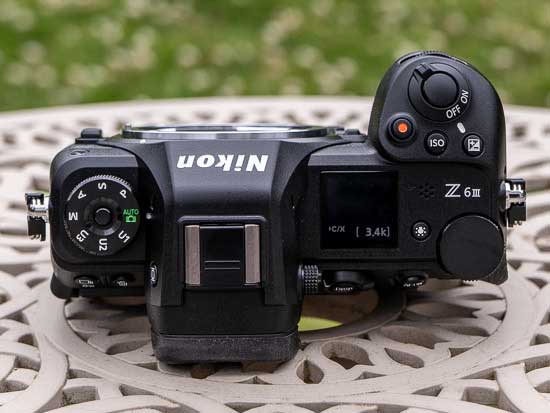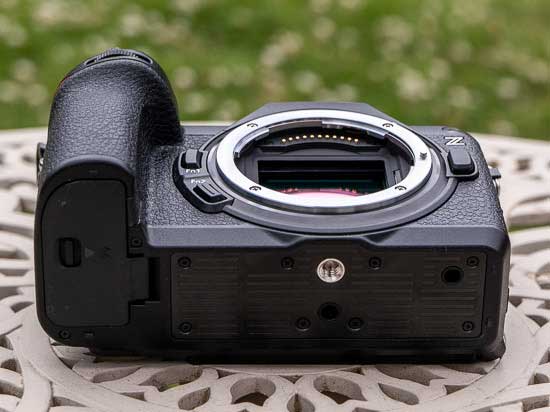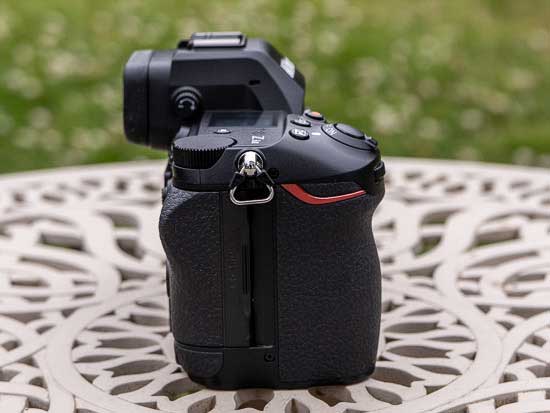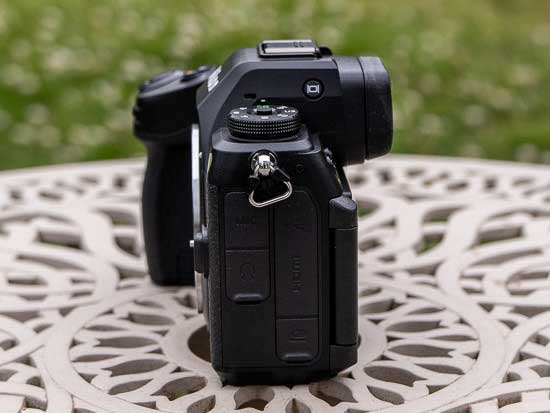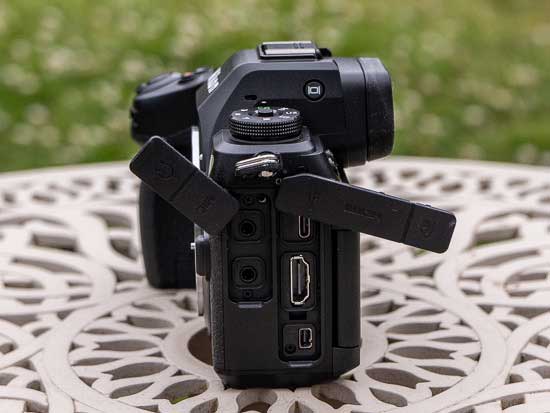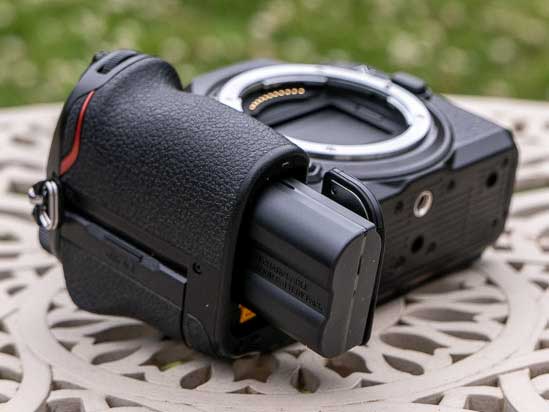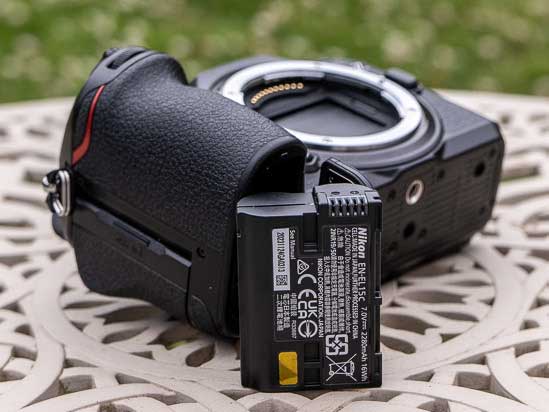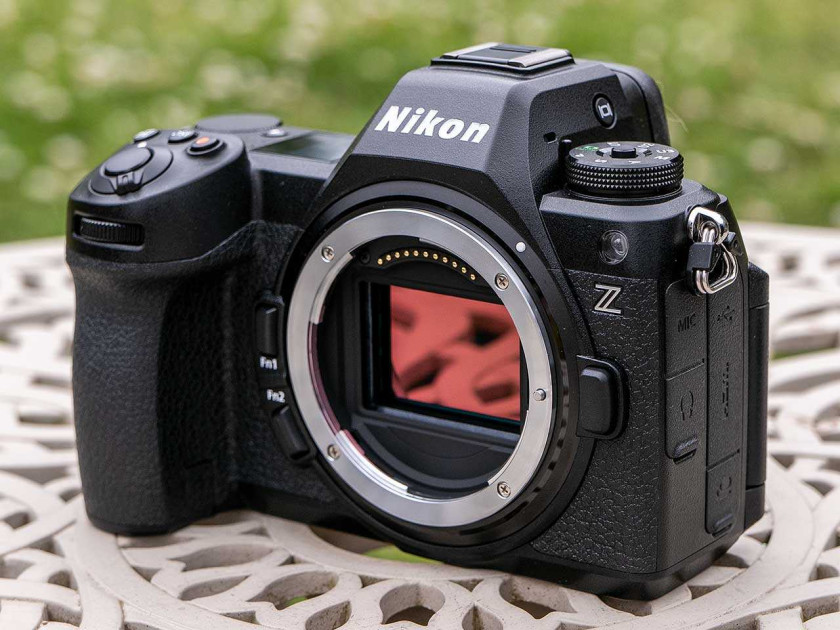
Introduction
The Z6 III is the long-awaited replacement for 2020’s Z6 II mid-range mirrorless camera, which was itself only a modest update of the original Z6 that was launched way back in 2018.
The 2024 version is an altogether different beast that represents a big step forward for Nikon’s more affordable full-frame cameras, on paper at least.
While the megapixel count remains the same as its predecessor at 24.5MP, it now boasts a world’s first “partially-stacked” sensor design which offers faster scan rates and readouts than its predecessor.
In turn, this promises to produce more detailed images with increased dynamic range and more accurate colour fidelity. In addition the wider native ISO range now runs from 100 to 64000 (expandable to 50-204800).
In conjunction with the same EXPEED 7 processor that drives the higher-end Z8 and Z9 models, the new sensor delivers a raft of improvements such as faster auto-focusing, up to 120fps burst shooting complete with Pre-Release Capture, a 4000-nit, 5670k-dot EVF that’s 33% brighter than the flagship Z9, and reduced rolling shutter distortion for fast-moving subjects.
Other key features of the Z6 III include internal 6K/60p RAW, 4K/120p and 1080/240p video, 8.0 stops of 5-axis image stabilisation, top shutter speed of 1/16,000 sec, fully articulating 2100k-dot touchscreen, weather sealing and cold resistance down to -10 C/14 F, dual CFexpress Type B and UHS-II SD memory card slots, and support for 96 megapixel images using pixel shift technology.
The Nikon Z6 III is available now priced in black at £2699 / / $2499 / €3099 body only in the UK, Europe and USA respectively. It is made in Thailand.
Read on for our in-depth Nikon Z6 III review, complete with full-size sample photos and videos for you to download and evaluate.
Ease of Use
Nikon has used pretty much the same body design for the Z6 III as the Z6 II, which doesn’t come as a great surprise in a mature market where upgrades are less frequent and more incremental.
Measuring 138.5 x 101.5 x 74 mm (5.5 x 4 x 3 in.) and weighing 760 g (1 lb. 10.9 oz.) with battery and memory card, fitted, it is a few mm wider and deeper and 45g heavier than its predecessor, mainly to accommodate the chunkier hand grip, which we think is definitely worth the trade off for the slightly better handling that it offers.
Otherwise you’d be hard-pressed to to tell the two cameras apart side-by-side, with the external control layouts being virtually identical – it’s inside the camera where the majority of the improvements have been made.
Burst shooting rates and buffer capacities have been greatly improved in this new Z6 model. The Z6 II was no slouch, offering 14fps rates and a buffer of 112 raws or 200 JPEGs. The Mark III takes things to another level, though, now being capable of shooting at 120fps (10MP DX-format JPEGs), or 60fps (24MP full-frame JPEGs), or 20fps (up to 1,000 24MP full-frame RAWs), all using the electronic shutter, or 14fps with the mechanical shutter.
In addition, the Z6 III also boasts Pre-Release Capture, a great feature that makes it easier to capture the decisive moment even when shooting at 120fps. When activated, the camera can buffer images up to 1 second before you fully depress the shutter button. Burst shooting then starts when the shutter is half-pressed and the buffer will retain up to 4 seconds’ worth of frames after fully pressing the shutter.
There is one important caveat when using this mode, which applies to all the Nikon camera that offer it to date. Pre-Release Capture is only available when shooting JPEGs, not RAW files, whereas the rival Canon EOS R6 II supports both JPEG and RAW formats for its equivalent feature.
On a more positive note, the Nikon Z6 III can shoot at 60fps at full resolution in the Pre-Release Capture mode, something that no other Nikon camera can match, including both the Z8 and Z9 (they both reduce the resolution to 19 megapixels).
Backing up the improved burst shooting and making the Z6 III much better suited to wildlife and sports photography is the revamped auto-focus system which is very similar to the one found on the flagship Z8/Z9.
The 493-point phase-detection AF system covers the full sensor area and AF calculations are conducted at up to 120fps to keep up with the fast continuous shooting speeds.
3D Tracking AF inherited from the company’s DSLR cameras helps the Z6 III to track fast-moving subjects, with the camera using a single AF point to track whatever’s underneath it while you half-press the shutter button.
It also inherits most, but not all, of the subject recognition modes that are available on the Zf, Z8 and Z9, with the notable exception of a dedicated bird detection mode which is part of the more general animal detection mode.
When paired with an F1.2 lens, the Z6 III boasts AF sensitivity that means it can auto-focus down to an incredible -10EV, even when not using the special Starlight AF shooting mode.
In terms of AF performance, the Z6 III represents a big improvement when compared with the Z6 II, getting it right a lot more frequently than that camera did and making it much easier to recommend for anybody that shoots a lot of moving subjects, such as wildlife or sport.
The in-body image stabilization system has been significantly improved with the Z6 III now offering 8.0 stops of 5-axis image stabilisation built into the camera’s body, up from 5 stops on the Z6 II, plus there’s electronic-VR for video recording. The optional Focus Point VR feature stabilises the area around the active focus point when shooting stills.
The Z6III’s video capabilities have also gained a significant upgrade in the four years since the release of the Mark II version.
The new model offers 12-bit 6K and oversampled 4K RAW (N-RAW and ProRES RAW ) recording internally up to 60fps for N-RAW and 30fps for ProRES, plus regular 4K at up to 120fps (1.5x crop) and 10x slow motion up to 240fps in Full HD.
Internal recording is also supported with 10-bit color and 4:2:2 sampling in the ProRes 422 HQ codec and 4:2:0 sampling in the H.265 codec at 5.4K 30p and 5.4K 60p.
The maximum recording time is an impressive 120 minutes, despite the absence of a cooling fan or other heat-dissipating design.
As with its predecessor, Nikon has opted for a chunky and solid design which shrinks down all the vital elements of the larger Z8/Z9 models, without it being frustratingly small to use.
The body of the Z6 III is still replete with plenty of dials and buttons which all have enough space to breathe, and we’ll go through those in more detail as we progress through this review.
It feels very well-built and has a premium-feeling textured covering around the hand-grip and rear thumb rest, which helps to both make the camera feel comfortable and secure in your hand as well as adding to the general feeling of quality.
Most of the buttons and dials are found on the right hand side of the camera, particularly those that you’re likely to use frequently. That means you can make almost all of the main changes to settings using just your right hand and conceivably even use the camera one-handed if you so wished.
Positioned on the left of the top plate, you’ll find the camera’s shooting mode dial. Here there’s all the usual manual and semi-automatic modes, (PSAM), as well as fully auto, and three slots for user-customised settings.
The latter three modes (U1-U3) come in very handy if you’re often shooting a particular type of subject, such as sports or action, and want to quickly flick to a certain group of settings that you’ve already configured.
Just underneath the mode dial on the rear of the camera, you’ll find the newly relocated burst shooting button, which has swapped places with the playback button, and the delete button.
Moving over to the right-hand side of the top plate and first of all you’ve got the LCD display, which shows you all the key settings, such as aperture, battery, remaining shots, drive mode and shutter speed. It’s a great way to quickly ascertain if you have the settings you want selected, without having to turn the camera on and check the rear screen.
To the right of the screen, there’s a large unmarked dial which you can rotate with your thumb and is used to adjust different settings depending on the shooting mode you’re in – for example in shutter priority mode, it will control the shutter speed. You can also use it in conjunction with one of the other buttons – such as ISO – to make adjustments.
Toward the front of the top plate, at the top of the grip, you’ll find the Off/On switch, as well as the shutter release button. This is surrounded by a dedicated video record button, an ISO button and an exposure compensation button.
At the front/top of the hand-grip is another scrolling dial, which again controls different settings depending on the mode you’re using – for example in aperture priority mode, it adjusts the aperture setting.
The rear of the camera is where you’ll find the majority of the buttons. Starting at the top, you’ve got a display button which you can use to adjust how both the screen and the viewfinder displays – for example, you can switch off the live view feed altogether and just show settings on the rear screen, and you can switch on and off a histogram and horizon level. In the viewfinder you can toggle on the level, histogram and display around the frame.
Around the display button, there’s a switch which you can use to move between stills mode and video mode. It’s quite a stiff switch, so it’s unlikely you’d do this by accident and end up in the wrong mode.
To the right of this button/dial combination is the AF-on button, which you can customise to allow for back-button focusing if you prefer to activate AF in that way. This means that when you press the shutter release, it won’t attempt to refocus again, which is useful for focusing and recomposing, or for photographing quick moving subjects.
Underneath the AF-On button, there’s a joystick. This comes in extremely handy for moving the AF point around the frame, either while composing via the screen, or while composing via the viewfinder.
Unlike some other cameras on the market, you can’t use the touchscreen while shooting through the viewfinder, so it’s very likely you’ll be using the joystick for this purpose. You can also use the stick to move around either the quick or full menu.
You can access a quick menu by pressing the “i” button underneath the mode dial. Here you’ll find a group of settings which you’re likely to use frequently, such as Picture Control, Flash, Release mode, AF-area mode, metering, and so on. You can navigate around this menu either by using the joystick, the directional keys or by touching on the setting you want to change.
You can then use the scrolling dials to adjust the setting as required. If you find there are settings in this menu that you don’t use all that often, you can customise the “i” menu in the main menu, swapping out any settings you don’t use for ones which you do. Another way to access the quick menu is to tap the “i” displayed on the camera screen, too.
Underneath the “i” button is an unmarked four-way navigational pad, with an OK button at the centre. You can use the directional keys to move the AF point around the screen, as well as navigate around images in playback, or bring up information about said images. The OK button can be used for menu navigation, but also for functions such as resetting the AF point to the centre of the frame.
Underneath the navi-pad is a button with a magnifying glass on it, which you can use to zoom into the scene you’re photographing – it’s particularly useful for checking critical focus, especially when using manual focus.
Directly underneath it there’s a zoom out button, too. You can also use these buttons in playback to check areas of the scene. To the right of the zoom in button is the main menu button, where you’ll find a vast array of settings, those which you’re unlikely to change on quite as regular a basis as those settings found in the quick menu.
There are several pages to move through, but they are reasonably well-organised into a set of different folders, such as Playback, Photo Shooting, Movie Shooting, Custom Settings, Setup and a Retouch menu.
There’s also a “My Menu”, where you can save any menu settings which you access frequently, to save you scrolling through pages of menus to find the exact setting which you need.
You’ll find the dual memory card slots behind a door which doubles up as the rear thumb rest. There’s one slot for XQD / CFExpress, while the secondary slot accepts SD format cards. Given the smaller size of the cameras it presumably wouldn’t be possible to put two XQD shaped slots here, so it’s a good compromise to have the smaller format alongside the more rugged / faster format.
There are a number of ways you can set up the secondary slot – you can either have it as a backup slot, which makes a straight copy of the first card as you’re shooting, you can have set up as “overflow”, so it only comes into play when the first card is full, or you can set up both cards to record different formats. So, you could have the XQD card slot record raw files, and the SD card slot record JPEGs, or one could record stills, and the other movie.
Two things which have changed since the previous version are the rear LCD screen and the electronic viewfinder. The Z6 III now has a much higher-resolution 5670k-dot OLED viewfinder with a refresh rate of 60fps, plus 4000-nit brightness which is 33% brighter than the flagship Z9. Another first on a Nikon camera is the EVF’s wide (DCI-P3) colour gamut which displays more life-like colours with no colour banding.
You can set the viewfinder to switch on automatically as you lift the camera to your eye (the default setting), or you can switch it to so it’s permanently on (and the rear screen is not / displays only camera settings), or you can even set it to permanently off if you prefer.
A button on the left-hand side of the viewfinder controls all of these settings, while there’s a diopter dial on the opposite side of the finder for adjusting the focus of the viewfinder.
Also upgraded on the Mark III version of the Z6 is the rear screen. It’s still a 3.2-inch, 2.1m-dot TFT touch-sensitive screen, but has now been changed from a tilting up/down design to a more versatile fully articulating design that can be flipped out both to the side and forwards/backwards. This is much more useful for shooting selfies or recording videos to camera and makes the Z6 III appeal more to vloggers.
On the left hand side of the camera is where you’ll find all the ports housed underneath two rubber flaps, including a headphone and microphone jack, a full-size HDMI port, a remote control port and a USB-C port which you can use for charging the camera. One small improvement is that the camera’s external mic input can now be used as a line-level input for pro-quality sound.
The Z6 III retains the ability to charge the camera while it is recording stills/video, which could be useful or videographers looking to extend the recording times. Battery life from the EN‑EL15c rechargeable Li-ion battery is quoted as 390 stills using the LCD screen and 340 using the viewfinder according to CIPA standards.
A new Power Battery Pack, the MB-N14, is also available which be used for vertical shooting as well as to increase shooting time with two EN-EL15c batteries housed in the grip.
Image Quality
All of the sample images in this review were taken using the 24.5 megapixel Fine* JPEG setting, which produces an average image size of around 9Mb.
Noise
The base sensitivity of the Nikon Z6 is ISO 100 but you can go down to ISO 50 (L1.0) if you wish. At the other end of the scale, the highest native sensitivity of the Nikon Z6 is ISO 64000, but boosted settings including ISO 102400 and ISO 204800 are also available. Here are some 100% crops which show the noise levels for each ISO setting, with JPEG on the left and RAW on the right.
JPEG
RAW
ISO 50
ISO 50
ISO 100
ISO 100
ISO 200
ISO 200
ISO 400
ISO 400
ISO 800
ISO 800
ISO 1600
ISO 1600
ISO 3200
ISO 3200
ISO 6400
ISO 6400
ISO 12800
ISO 12800
ISO 25600
ISO 25600
ISO 51200
ISO 51200
ISO 102400
ISO 102400
ISO 204800
ISO 204800
File Quality
The Nikon Z6 III has two different file options – Raw and JPEG – with three compression options available for Raw and 6 for JPEG. Here are some 100% crops which show the differences between them all, with the full image size shown in brackets.
Fine* JPEG (9.7Mb)
Fine JPEG (7.7Mb)
Normal* JPEG (5.8Mb)
Normal (5.4Mb)
Basic* JPEG (2.7Mb)
Basic (1.5Mb)
RAW Lossless (27.7Mb)
RAW High Efficiency* (17.4Mb)
RAW High Efficiency (11.3Mb)
Active D-lighting (ADL)
D-lighting is Nikon’s dynamic range optimisation tool that attempts to squeeze the full dynamic range of the sensor into JPEGs. Active D-lighting works “on the fly”, before the in-camera processing engine converts the raw image data into JPEGs. The available settings are Off, Low, Normal, High, Extra High 1 and Extra High 2, plus an Auto mode.

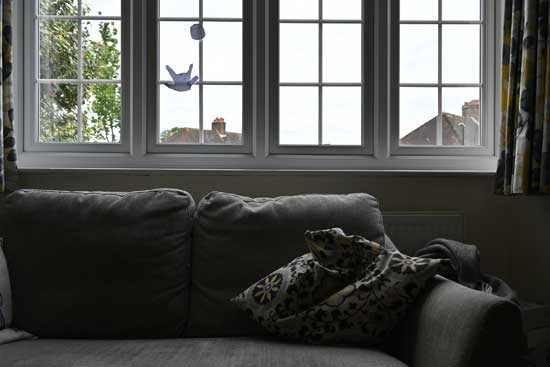
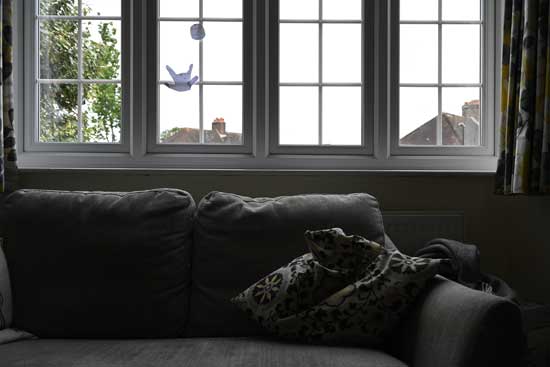
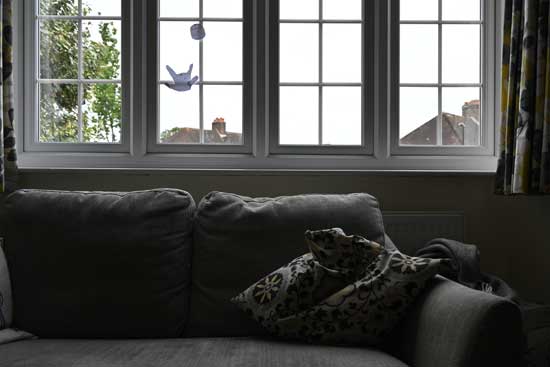
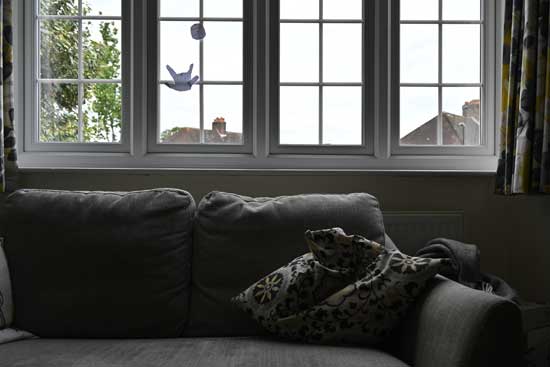
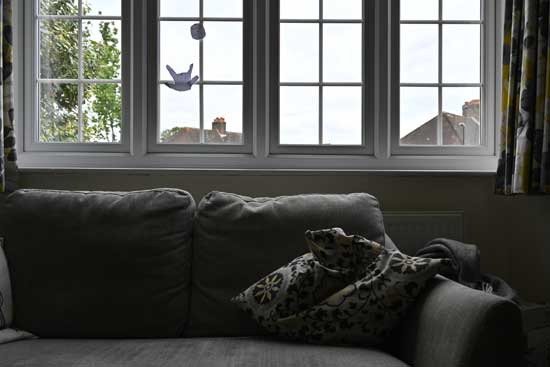
HDR
The Nikon Z6 III’s HDR Mode captures three different exposures and combines them into one, retaining more shadow and highlight detail, with an Auto mode, and four different strengths.
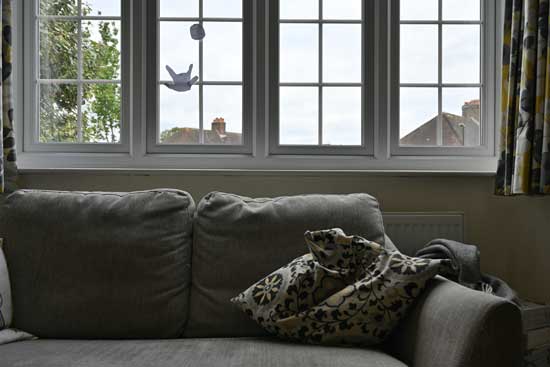
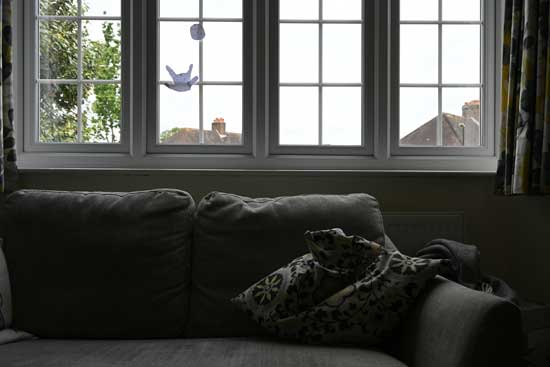
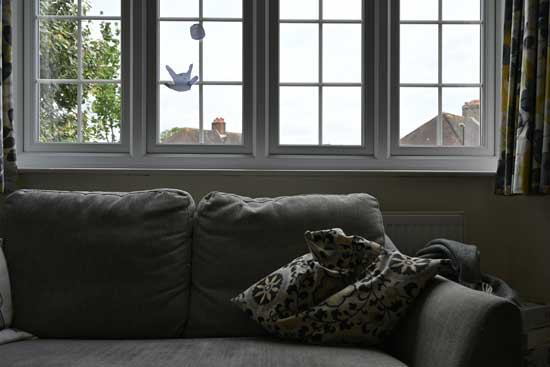
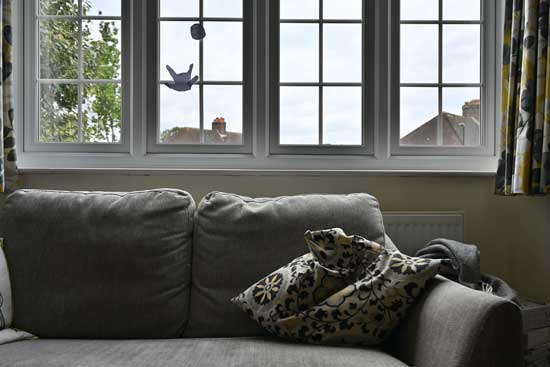
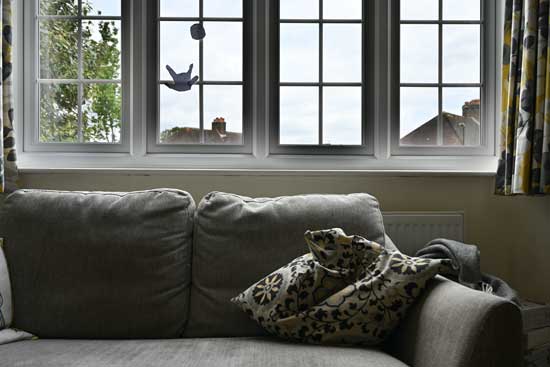
Picture Controls
Nikon’s Picture Controls are preset combinations of sharpening, contrast, brightness, saturation and hue. All 31 different Picture Controls can be tweaked to your liking, then saved and transferred to other cameras.






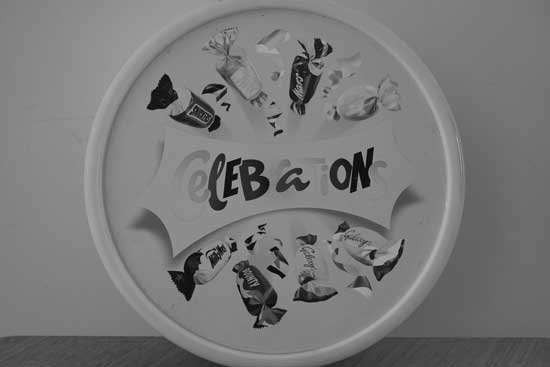
























Multiple Exposure
The Nikon Z6 III’s multiple exposure mode allows you to take between two and ten images and merge them into a single photo in-camera.
Sample Images
This is a selection of sample images from the Nikon Z6 III camera, which were all taken using the 45.7 megapixel Fine* JPEG setting. The thumbnails below link to the full-sized versions, which have not been altered in any way.
Sample RAW Images
The Nikon Z6 III enables users to capture RAW and JPEG format files. We’ve provided some Nikon RAW (NEF) samples for you to download (thumbnail images shown below are not 100% representative).
Sample Movies & Video
This is a sample 6K/60p movie at the quality setting of 5376×3024 pixels at 60 frames per second.
This is a sample 4K/120p movie at the quality setting of 3840×2160 pixels at 120 frames per second.
This is a sample 4K/60p movie at the quality setting of 3840×2160 pixels at 60 frames per second.
This is a sample 4K/24p movie at the quality setting of 3840×2160 pixels at 24 frames per second.
This is a sample FHD/240p movie at the quality setting of 1920×1080 pixels at 240 frames per second.
Product Images
Conclusion
Whereas the Z6 II felt like a rather incremental upgrade of the original version that launched two years earlier, the new Mark III is much more the true successor to the 2018 debutant, taking Nikon’s mid-range mirrorless camera forwards in veritable leaps and bounds.
It’s also a more than viable alternative to the more expensive Z8 model, offering enough comparable features and performance (and even a few extra ones) in a smaller, lighter body at a lower price-point, clearly making it the better choice for a lot of users.
In our Z6 II review we commented that “it’s still not a camera that would be ideally suited to capturing fast action or moving subjects – meaning that Nikon still doesn’t have a mirrorless camera to rival its own DSLRS when it comes to this type of work. It also doesn’t have a camera which truly rivals other mirrorless manufacturers including Sony and its arch-nemesis, Canon”. Ouch!
Nikon must surely have listened to both us and other independent sources, however, as the same criticism can certainly no longer be levelled at their prosumer offering.
With a wealth of improvements to burst shooting rates and buffer size, auto-focusing speed and reliability, class-leading IBIS and the excellent electronic viewfinder, the Z6 III is eminently well-suited to capturing both stills and video of wildlife, sports and anything that moves quickly, something that couldn’t be confidently said about its predecessor.
The official price has gone up by around £$500 since the £2000 launch of the Z6 and Z6 II, bringing the Mark III directly in line with the Sony A7 IV and the Canon EOS R6 II, both of which are slightly older but still very serious rivals.
You also need to consider if really you need the Z6 III if you already have a Z6 II, or, as the latter camera is still on sale, if you’re contemplating picking one up for the first time. If budget is a big concern, you can save a hefty chunk of cash by either sticking with what you’ve already got or plumping for the previous, but not yet discontinued, model.
Overall, though, the shiny new Z6 III is a compelling all-rounder that quietly and confidently delivers 90% of the features and performance that the majority of its target audience really need – which is high praise indeed!
| Ratings (out of 5) | |
|---|---|
| Design | 5 |
| Features | 4.5 |
| Ease-of-use | 4.5 |
| Image quality | 5 |
| Value for money | 4 |
Main Rivals
Listed below are some of the rivals of the Nikon Z6 III.
The EOS R5 has been the hottest full-frame camera on the block ever since Canon pre-announced it back at the start of 2020, thanks to its headline grabbing twin features of a 45 megapixel sensor and 8K video recording. We’ve seen it a few times since then, but now we can finally bring you our final Canon R5 review, complete with full-size sample photos and videos!

The EOS R6 Mark II is the successor to one of our favourite full-frame mirrorless cameras, principally adding a new 24 megapixel sensor, 40fps burst shooting and improved auto-focusing. Read our in-depth Canon EOS R6 II review now, complete with full-size sample photos and videos.

The Nikon Z6 II mirrorless camera is an evolutionary upgrade of the original Z6, principally improving the autofocusing, buffer and video and adding a second memory card slot. Is this enough to compete with its main rivals? Find out now by reading our in-depth Nikon Z6 II review, complete with full size sample photos and videos…

The Nikon Z7 II full-frame mirrorless camera is the 2020 update of the original Z7 model, principally improving the autofocusing, buffer and video and adding a second memory card slot. Are these changes enough for it to compete with its main rivals like the Sony A7R IV and the Canon EOS R5? Find out now by reading our in-depth Nikon Z7 II review, complete with full size sample photos and videos…

As the spiritual successor to the popular D850 DSLR, the new Z8 full-frame mirrorless camera could turn out to be one of the most important products that Nikon have ever released. Read our in-depth Nikon Z8 review, complete with full-size sample photos and videos, to find out more about this mirrorless marvel…

The Nikon Z9 is a professional level, full-frame mirrorless camera for photographers and videographers that features a 45 megapixel stacked BSI sensor, 8K/30p and 4K/120p video recording, 30fps burst shooting and a dual-grip design. Read our in-depth Nikon Z9 review complete with full-size sample photos and videos to find out just what this flagship camera is capable of…

Vintage, retro, heritage – Nikon are back with the Zf, a very modern 35mm full-frame digital camera housed inside a body that’s clearly been inspired by the classic FM2 SLR from the 1980s. We take an in-depth look at the Nikon Zf in our full review, complete with full-size sample photos and videos.

Finally! The new Lumix S5 II is the first ever Panasonic camera to have a phase hybrid detection AF system, answering the critics of its contrast-based DFD system. But does this powerful hybrid photo and video camera have what it takes to beat its main rivals? Find out now by reading our in-depth Panasonic Lumix S5 II review, complete with full-size sample photos and videos.

We’ve kicked off our Panasonic Lumix S9 review with sample JPEG and RAW images, product shots and more…
Review Roundup
Reviews of the Nikon Z6 III from around the web.
You don’t get something for nothing. The Z6 III is by far the most expensive Z6-series camera to date, bumping up the purchase price at launch by about 25 percent, compared with previous models.
Read the full review »
Specifications
Lens mount
Nikon Z mount
Image sensor format
FX
Image sensor type
CMOS
Sensor size
35.9 mm x 23.9 mm
Total pixels
26.79 million
Dust-reduction system
Image sensor cleaning, Image Dust Off reference data (requires NX Studio)
Effective pixels
24.5 million
Image size (pixels)
[FX (36 x 24)] selected for image area:
(L) 6048 x 4032 ( 24.4 million)
(M) 4528 x 3024 ( 13.7 million)
(S) 3024 x 2016 ( 6.1 million)
[DX (24 x 16)] selected for image area:
(L) 3984 x 2656 ( 10.6 million)
(M) 2976 x 1992 ( 5.9 million)
(S) 1984 x 1328 ( 2.6 million)
[1:1 (24 x 24)] selected for image area:
(L) 4032 x 4032 ( 16.3 million)
(M) 3024 x 3024 ( 9.1 million)
(S) 2016 x 2016 ( 4.1 million)
[16:9 (36 x 20)] selected for image area:
(L) 6048 x 3400 ( 20.6 million)
(M) 4528 x 2544 ( 11.5 million)
(S) 3024 x 1696 ( 5.1 million)
File format (image quality)
NEF (RAW): 14 bit; choose from lossless compression, high efficiency (high), and high efficiency options
JPEG: JPEG-Baseline compliant with fine (approx. 1 : 4), normal (approx. 1 : 8), or basic (approx. 1 : 16) compression; size-priority and optimal-quality compression available
HEIF: Supports fine (approx. 1 : 4), normal (approx. 1 : 8), or basic (approx. 1 : 16) compression; size-priority and optimal-quality compression available
NEF (RAW)+JPEG: Single photograph recorded in both NEF (RAW) and JPEG formats
NEF (RAW)+HEIF: Single photograph recorded in both NEF (RAW) and HEIF formats
Picture Control System
Auto , Standard , Neutral , Vivid , Monochrome , Flat Monochrome , Deep Tone Monochrome , Portrait , Rich Tone Portrait , Landscape , Flat
Creative Picture Controls (Dream, Morning, Pop, Sunday, Somber, Dramatic, Silence, Bleached, Melancholic, Pure, Denim, Toy, Sepia, Blue, Red, Pink, Charcoal, Graphite, Binary, Carbon); selected Picture Control can be modified; storage for Custom Picture Controls
Note: Choice of Picture Controls is restricted to Standard, Monochrome, and Flat when HLG is selected for tone mode during still photography.
Media
CFexpress (Type B) , XQD , SD , SDHC (UHS-II compliant) , SDXC (UHS-II compliant)
Dual card slot
1 CFexpress card or XQD card and 1 Secure Digital (SD) card
Either card can be used for overflow or backup storage, for separate storage of NEF (RAW) and JPEG or HEIF pictures, or for storage of duplicate JPEG or HEIF pictures at different sizes and image qualities; pictures can be copied between cards.
File system
DCF 2.0, Exif 2.32, MPEG‑A MIAF
Viewfinder
1.27-cm/0.5-in. approx. 5760k-dot UXGA OLED electronic viewfinder with color balance and auto and 19-level manual brightness controls; high frame-rate display available
Frame coverage
Approx. 100% horizontal and 100% vertical
Magnification
Approx. 0.8x (50 mm lens at infinity, -1.0 m-1)
Eyepoint
21 mm (-1.0 m-1; from rearmost surface of viewfinder eyepiece lens)
Diopter adjustment
-4 to +2 m-1
Eye sensor
Automatically switches between monitor and viewfinder displays
Compatible lenses
Z mount NIKKOR lenses
F mount NIKKOR lenses (mount adapter required; restrictions may apply)
Shutter type
Electronically-controlled vertical-travel focal-plane mechanical shutter; electronic front-curtain shutter; electronic shutter
Shutter speed
¹⁄₈₀₀₀ to 30 s (choose from step sizes of ¹⁄₃, ¹⁄₂, and 1 EV, extendable to 900 s in mode M), bulb, time
When using an electronic shutter, the shutter speed can be set up to ¹⁄₁₆₀₀₀ s.
Flash sync speed
Flash synchronizes with shutter at speeds of ¹⁄₂₀₀ s or slower; faster sync speeds are supported with auto FP high-speed sync
When using an electronic shutter, flash synchronizes with the shutter at speeds of ¹⁄₆₀ s or slower; and auto FP high-speed sync cannot be used.
Release mode
Single frame , continuous low-speed , continuous high-speed , continuous high-speed (extended) , high-speed frame capture + with Pre-Release Capture , Self-timer
Approximate frame advance rate
Up to 120 fps
Continuous low-speed: Approx. 1 to 7 fps
Continuous high speed: Approx. 8.1 fps (when using the electronic shutter and image quality settings other than NEF (RAW) and NEF (RAW) +: approx. 16 fps)
Continuous high speed (extended): Approx. 14 fps (with electronic shutter: Approx. 20 fps)
High-speed frame capture + (C30): Approx. 30 fps
High-speed frame capture + (C60): Approx. 60 fps
High-speed frame capture + (C120): Approx. 120 fps
Maximum frame advance rate as measured by in-house tests.
Self-timer
2 s, 5 s, 10 s, 20 s; 1 to 9 exposures at intervals of 0.5, 1, 2, or 3 s
Exposure Metering System
TTL metering using camera image sensor
Exposure Metering mode
Matrix metering
Center-weighted metering: Weight of 75% given to 12 or 8 mm circle in center of frame or weighting can be based on average of entire frame
Spot metering: Meters circle with a diameter of approximately 4 mm centered on selected focus point
Highlight-weighted metering
Exposure Range
-4 to +17 EV
Figures are for ISO 100 equivalent and f/2.0 lens at 20 °C/68 °F
Exposure Mode
AUTO: auto, P: programmed auto with flexible program, S: shutter-priority auto, A: aperture-priority auto, M: manual
Exposure compensation
-5 to +5 EV (choose from step sizes of ¹⁄₃ and ¹⁄₂ EV)
Exposure lock
Luminosity locked at detected value
ISO sensitivity (Recommended Exposure Index)
ISO 100 to 64000 (choose from step sizes of ¹⁄₃ and 1 EV);
can also be set to approx. 0.3, 0.7, or 1 EV (ISO 50 equivalent) below ISO 100 or to approx. 0.3, 0.7, 1, or 1.7 EV (ISO 204800 equivalent) above ISO 64000; auto ISO sensitivity control available
Note: ISO sensitivity is limited to 400 to 64000 when HLG is selected for tone mode.
Active D-Lighting
Auto, Extra high, High, Normal, Low, and Off
Multiple exposure
Add, average, lighten, darken
Other options
HDR overlay, photo mode flicker reduction, high-frequency flicker reduction
Autofocus system
Hybrid phase-detection/contrast AF with AF assist
Detection range
-10 to +19 EV
Measured in photo mode at ISO 100 equivalent and a temperature of 20 °C/68 °F using single-servo AF (AF‑S) and a lens with a maximum aperture of f/1.2
Lens servo
Autofocus (AF):
Single-servo AF (AF-S) , continuous-servo AF (AF-C) , full-time AF (AF-F; available only in video mode); predictive focus tracking
Manual focus (M):
Electronic rangefinder can be used
Focus Point
273 focus points (single-point AF), 299 focus points (auto-area AF);
Number of focus points available in photo mode with FX selected for image area
AF-area mode
Pinpoint (available in photo mode only), single-point, dynamic-area (S, M, and L; available in photo mode only), wide-area (S, L, C1, and C2), and auto-area AF; 3D-tracking (available in photo mode only); subject-tracking AF (available in video mode only)
Focus lock
Focus can be locked by pressing shutter-release button halfway (single-servo AF/AF‑S) or by pressing the center of the sub-selector
Camera on-board VR
5-axis image sensor shift
Lens on-board VR
Lens shift (available with VR lenses)
Flash control
TTL: i‑TTL flash control; i‑TTL balanced fill-flash is used with matrix, center-weighted, and highlight-weighted metering, standard i‑TTL fill-flash with spot metering
Flash modes
Front-curtain sync, slow sync, rear-curtain sync, red-eye reduction, red-eye reduction with slow sync, off
Flash compensation
-3 to +1 EV (choose from step sizes of ¹⁄₃ and ¹⁄₂ EV)
Flash-ready indicator
Lights when optional flash unit is fully charged; flashes as underexposure warning after flash is fired at full output
Accessory shoe
ISO 518 hot-shoe with sync and data contacts and safety lock
Nikon Creative Lighting System (CLS)
i-TTL flash control, radio-controlled Advanced Wireless Lighting, optical Advanced Wireless Lighting, modeling illumination, FV lock, Color Information Communication, auto FP high-speed sync, unified flash control
White balance
Auto (3 types), natural light auto, direct sunlight, cloudy, shade, incandescent, fluorescent (3 types), flash, choose color temperature (2500 to 10,000 K), preset manual (up to 6 values can be stored), all with fine-tuning
Bracketing types
Exposure and/or flash, white balance, ADL
Other options for still photography
Vignette control, diffraction compensation, auto distortion control, skin softening, portrait impression balance, and interval-timer, focus-shift, and pixel-shift photography
Video Metering system
TTL metering using camera image sensor
Video Metering mode
Matrix, center-weighted, or highlight-weighted
Video Frame size (pixels) and frame rate
5376 x 3024 (5.4K): 60p/50p/30p/25p/24p
3840 x 2160 (4K UHD): 120p/100p/60p/50p/30p/25p/24p
1920 x 1080: 240p/200p/120p/100p/60p/50p/30p/25p/24p
1920 x 1080 (slow-motion): 30p x4/25p x4/24p x5
Note: Actual frame rates for 240p, 200p, 120p, 100p, 60p, 50p, 30p, 25p, and 24p are 239.76, 200, 119.88, 100, 59.94, 50, 29.97, 25, and 23.976 fps respectively.
Video Frame size (pixels) and frame rate (RAW video)
6048 x 3402: 60p/50p/30p/25p/24p
4032 x 2268: 60p/50p/30p/25p/24p
3984 x 2240: 120p/100p/60p/50p/30p/25p/24p
Note: Actual frame rates for 120p, 100p, 60p, 50p, 30p, 25p, and 24p are 119.88, 100, 59.94, 50, 29.97, 25, and 23.976 fps respectively.
Video File format
NEV, MOV, MP4
Video compression
N-RAW (12 bit), Apple ProRes RAW HQ (12 bit), Apple ProRes 422 HQ (10 bit), H.265/HEVC (8 bit/10 bit), H.264/AVC (8 bit)
Audio recording format
Linear PCM (48 KHz, 24 bit, for videos recorded in NEV or MOV format) , AAC (48 KHz, 16 bit, for videos recorded in MP4 format)
Audio recording device
Built-in stereo or external microphone can be used; external audio devices can be used via line input, audio input sensitivity adjustable; attenuator, frequency response, and wind noise reduction functions
Exposure compensation
-3 to +3 EV (choose from step sizes of ¹⁄₃ and ¹⁄₂ EV)
ISO sensitivity (Recommended Exposure Index)
Mode M: Manual selection (ISO 100 to 51200; choose from step sizes of ¹⁄₆, ¹⁄₃ and 1 EV); with additional options available equivalent to approximately 0.3, 0.7, 1, or 2 EV (ISO 204800 equivalent) above ISO 51200; auto ISO sensitivity control (ISO 100 to Hi 2.0) available with selectable upper limit
Note: ISO sensitivity is limited to 400 to 51200 when HLG is selected for tone mode.
Note: ISO sensitivity is limited to Lo 0.3 to 2.0 and 800 to 51200 when N-Log is selected for tone mode.
Modes P, S, A: Auto ISO sensitivity control (ISO 100 to Hi 2.0) with selectable upper limit
AUTO mode: Auto ISO sensitivity control (ISO 100 to 51200)
Active D-Lighting
Extra high, High, Normal, Low, and Off
Other options for video recording
Time-lapse video recording, electronic vibration reduction, time codes, N-Log and HDR (HLG) video, wave-form display, red REC frame indicator, video recording display zoom (50%, 100%, and 200%), extended shutter speeds (modes S and M), and dual-format (proxy-video) recording for RAW video; option to view video recording info available via i menu; Hi-Res Zoom
Monitor size
8 -cm ( 3.2 –in.) diagonal
Monitor type
Vari-angle TFT touch-sensitive LCD with 170° viewing angle, approximately 100% frame coverage, and color balance and 15-level manual brightness controls
Monitor resolution
Approx. 2100 k-dot
Playback
Full-frame and thumbnail (up to 4, 9, or 72 pictures) playback with playback zoom, playback zoom cropping, video playback, slide shows, histogram display, highlights, photo information, location data display, auto picture rotation, picture rating, voice memo recording and playback, IPTC information embedding and display, filtered playback, skip to first shot in series, series playback, save consecutive frames, and motion blend
USB connector
Type C SuperSpeed USB connector; connection to built-in USB ports is recommended
HDMI output connector
Type A HDMI connector
External audio input
Stereo mini-pin jack (3.5 mm diameter; plug-in power and line input supported)
Audio output
Stereo mini-pin jack (3.5 mm diameter)
Accessory terminal
Built-in (can be used with MC-DC2 remote cords and other optional accessories)
Wi-Fi “NIJ”
Standards:
IEEE802.11b/g/n/a/ac
Operating frequency:
2412 to 2472 MHz (channel 13) and 5180 to 5700 MHz
Maximum output power (EIRP):
2.4 GHz band: 3.8 dBm
5 GHz band: 9.5 dBm
Authentication:
Open system, WPA2-PSK, WPA3-SAE
Wi-Fi “NICS”
Standards:
IEEE 802.11b/g/n/a/ac
Operating frequency:
2412 to 2472 MHz (channel 13) and 5150 to 5850 MHz (5150 to 5350 MHz and 5725 to 5850 MHz)
Maximum output power (EIRP):
2.4 GHz band: 3.8 dBm
5 GHz band: 9.5 dBm
Authentication:
Open system, WPA2-PSK, WPA3-SAE
Wi-Fi “NIKC”
Standards:
IEEE 802.11b/g/n/a/ac
Operating frequency:
2412 to 2472 MHz (channel 13) and 5180 to 5825 MHz (5180 to 5700 MHz and 5745 to 5825 MHz)
Maximum output power (EIRP):
2.4 GHz band: 3.8 dBm
5 GHz band: 9.5 dBm
Authentication:
Open system, WPA2-PSK, WPA3-SAE
Wi-Fi “Others”
Standards:
IEEE 802.11b/g/n/a/ac (Europe, Africa, the Middle East, Asia, Oceania, U.S.A., Canada, and Mexico)
IEEE 802.11b/g/n/a (The Americas, other than U.S.A., Canada, and Mexico)
Operating frequency:
Europe (other than Ukraine), Israel, Turkey and India: 2412 to 2472 MHz (channel 13) and 5180 to 5825 MHz (5180 to 5700 MHz and 5745 to 5825 MHz)
Algeria, Egypt, Morocco, the Republic of Congo, and Ukraine: 2412 to 2462 MHz (channel 11) and 5180 to 5320 MHz
Africa (other than Algeria, Egypt, Morocco, and the Republic of Congo), Asia (other than Turkey), and the Middle East (other than Israel): 2412 to 2462 MHz (channel 11) and 5745 to 5805 MHz
U.S.A., Canada, Mexico, Australia, New Zealand, the Republic of Fiji, and Papua New Guinea: 2412 to 2462 MHz (channel 11) and 5180 to 5825 MHz (5180 to 5580 MHz, 5660 to 5700 MHz, and 5745 to 5825 MHz)
Other countries in the Americas: 2412 to 2462 MHz (channel 11) and 5180 to 5805 MHz (5180 to 5320 MHz and 5745 to 5805 MHz)
Maximum output power (EIRP):
2.4 GHz band: 3.8 dBm
5 GHz band: 9.5 dBm
Authentication:
Open system, WPA2-PSK, WPA3-SAE
Bluetooth
Communication protocols:
Bluetooth Specification version 5.0
Operating frequency:
Bluetooth: 2402 to 2480 MHz
Bluetooth Low Energy: 2402 to 2480 MHz
Maximum output power (EIRP):
Bluetooth: -1.7 dBm
Bluetooth Low Energy: -3.2 dBm
Battery
One EN‑EL15c rechargeable Li-ion battery*
*EN‑EL15b and EN‑EL15a batteries can be used in place of the EN‑EL15c. Note, however, that fewer pictures can be taken on a single charge than with the EN‑EL15c. EH-8P AC adapters can be used to charge EN‑EL15c and EN‑EL15b batteries only.
Battery pack
MB-N14 power battery packs (available separately) taking two EN‑EL15c* batteries
*EN‑EL15b and EN‑EL15a batteries can be used in place of the EN‑EL15c. Note, however, that fewer pictures can be taken on a single charge than with the EN‑EL15c.
AC adapter
EH-8P AC adapters (available separately); supplied UC‑E25 USB cable required
EH‑5d, EH‑5c, and EH‑5b AC adapters; requires EP‑5B power connector (available separately)
Tripod socket
0.635 cm (¹⁄₄ in., ISO 1222)
Dimensions (W x H x D)
Approx. 138.5 x 101.5 x 74 mm ( 5.5 x 4 x 3 in.)
Weight
Approx. 760 g
( 1 lb. 10.9 oz. )
with battery and memory card but without body cap and accessory shoe cover; approx. 670 g/1 lb. 7.7 oz. (camera body only)
Operating Environment
Temperature: -10 °C to 40 °C (+14 °F to 104 °F)
Humidity: 85% or less (no condensation)
Supplied accessories
BS‑1 Accessory Shoe Cover (comes attached to camera), DK‑29 Rubber Eyecup (comes attached to camera), BF‑N1 Body Cap, EN‑EL15c Rechargeable Li-ion Battery with terminal cover, HDMI/USB Cable Clip, AN‑DC26 Strap, UC‑E25 USB Cable
Your Comments
Credit : Source Post


